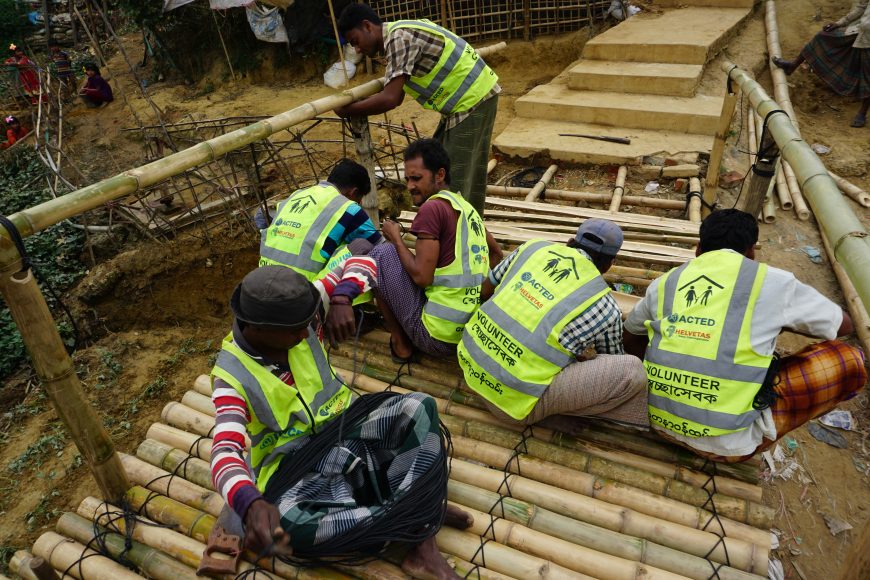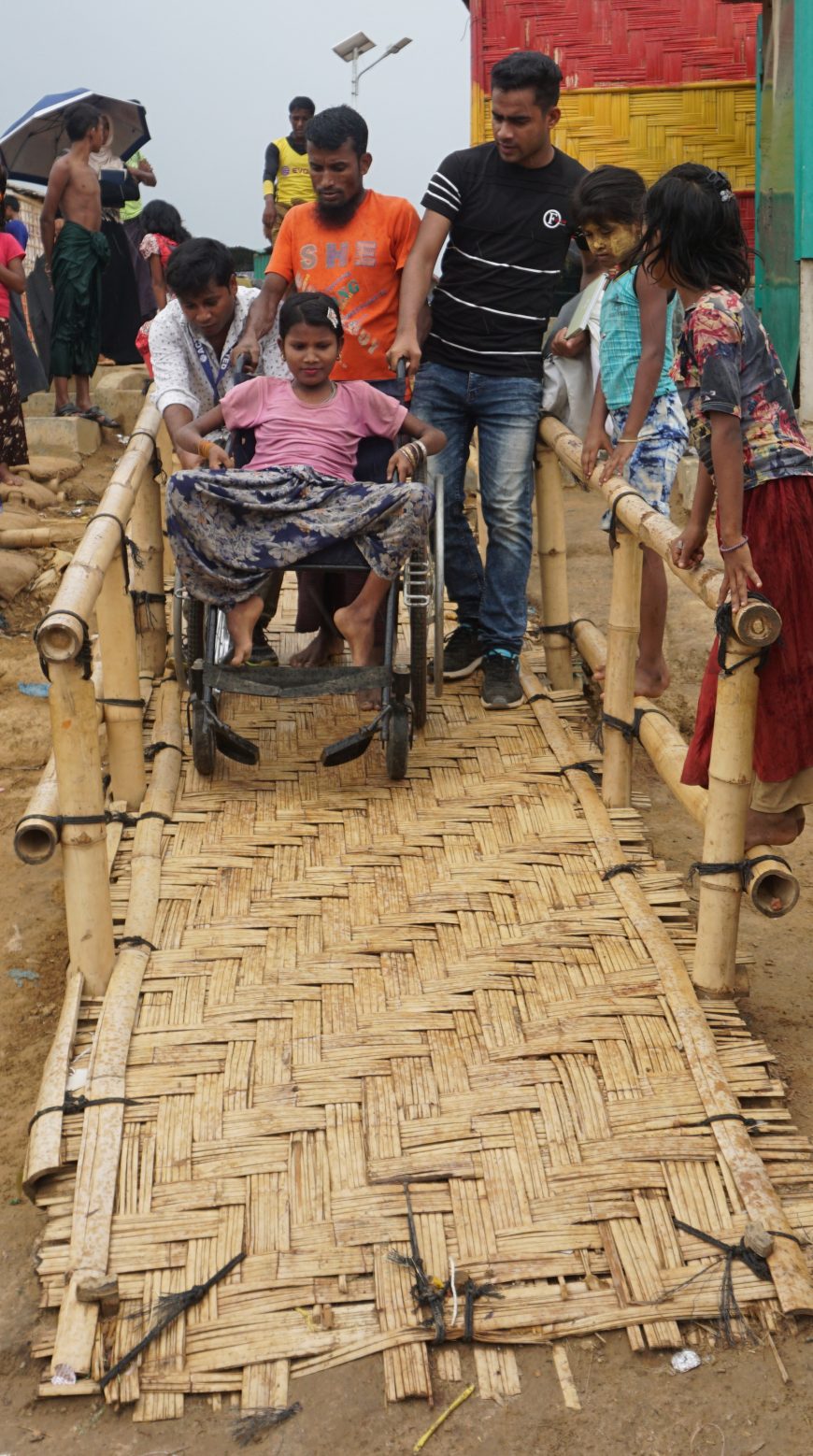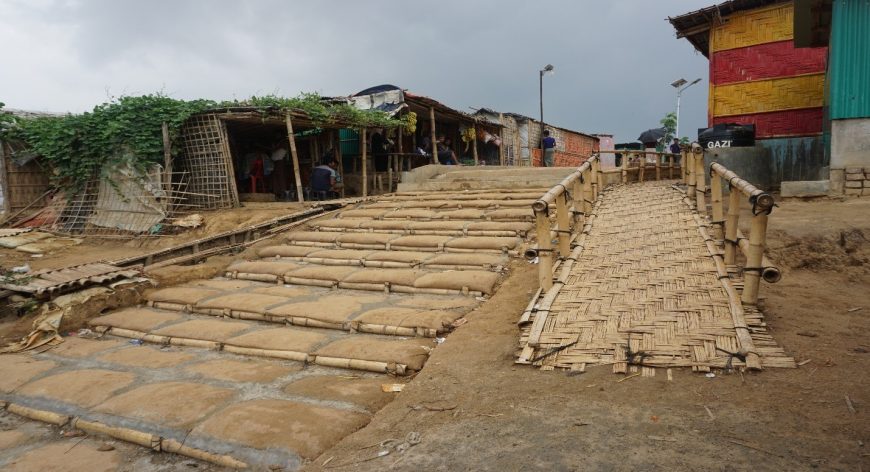In the monsoon of 2018, I saw many accidents happen here. Many people were injured when they tried to travel this road. Now my family can access the biggest market and the hospital when we need medical treatment
When the influx of over 700,000 Rohingya refugees from Myanmar arrived in Bangladesh in late 2017, the area that is now Kutupalong “Mega Camp” near Cox’s Bazar was little more than a mound of swirling dust on top of a barren hill.
In order to meet the refugees’ essential need for shelter, humanitarian organisations hastily built thousands of makeshift emergency structures which came to resemble a chaotic hodgepodge of bamboo, tarpaulin, and rope. The situation was so urgent that there was simply no time for thorough camp planning.
As a Camp Coordination and Camp Management (CCCM) partner of UNHCR and with support from Helvetas Swiss Intercooperation, ACTED plays an integral role in ongoing efforts to make the camp a safer and livable place for its inhabitants.
Transitioning out of the emergency phase
As the influx of refugees slowed gradually over the following months, a new civilization coalesced in the camp. The humanitarian community initiated a camp-wide urban planning effort improve the daily lives of refugees, reduce the risk of monsoons and cyclones impacting the camp infrastructure, and ensure better community access to services such as healthcare, education, and water. Roads were built, structures were fortified, and the camp began to resemble a bustling, functioning peri-urban city. Nevertheless, the sheer size of the camp meant that many areas went neglected, and numerous hazards posed daily threats to the safety of the community.
Identifying dangerous areas through community engagement

In Camp 3, children had no way to reach their school other than traversing a steep, muddy hillside where accidents and injuries were quite common. In March 2019, ACTED’s infrastructure team identified the problem in conversations with community members, and quickly initiated construction of a stairway and disability access ramp to ensure safe passage to and from school.
Improving access to services

The rate of accidents has reduced to almost zero. This place remains clean and clear, even after rains, because the stairs and ramp prevent mud from taking over.
In May 2019, ACTED completed the stairway and ramp, and the number of accidents and injuries on the hillside fell significantly. This site improvement project, and countless others like it, demonstrate how the humanitarian community continues to improve the camp’s infrastructure and remove hazards wherever possible. It also shows ACTED’s dedication to understanding the specific needs of the community and making the camp feel more like a home.
